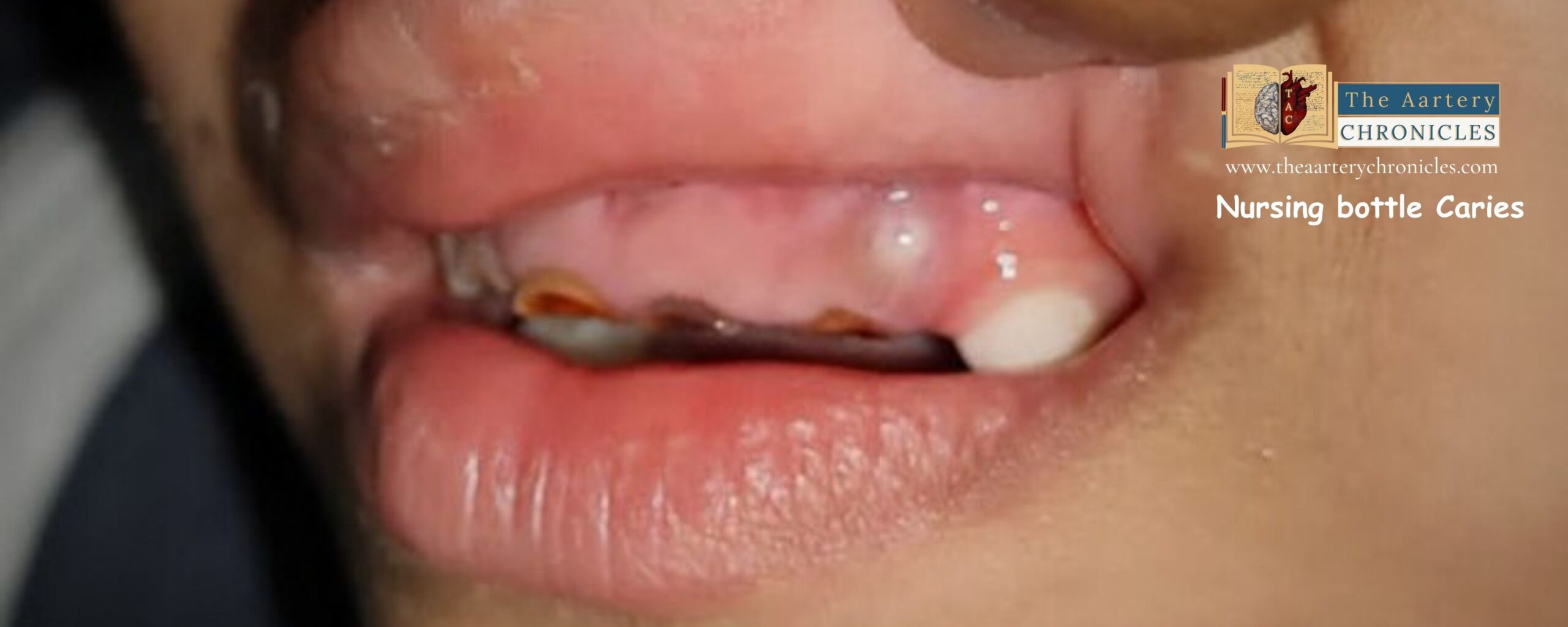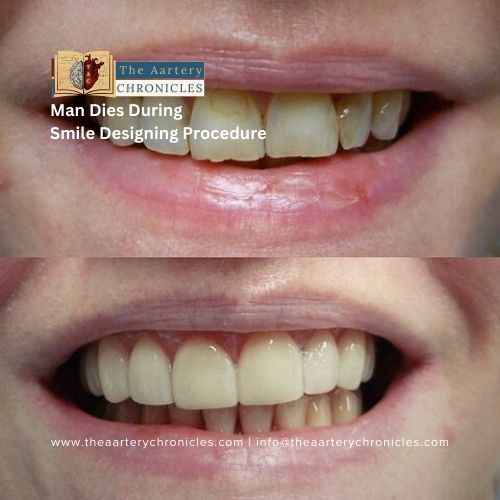

Nursing Bottle Caries: Tips for Preventing Tooth Decay in Infants and Toddlers
Introduction
The joyous arrival of a new addition to the family brings unparalleled happiness, and every parent strives to offer the best care to their little ones. However, a frequently neglected aspect in the care of infants and toddlers is their oral health, particularly the possibility of tooth decay. Yet, a pertinent question arises: Given that the primary cause of dental caries is high sugar in one’s diet, how is a bottle-fed infant susceptible to developing cavities?
In this article, we will explore the causes, symptoms, and preventive measures to ensure the lasting health of your child’s precious smile.
What is Nursing Bottle Caries?
Nursing bottle caries is a chronic infectious disease of childhood characterized by tooth decay in infants and toddlers due to inappropriate bottle use or nursing practices. This peculiar disease is also referred to by terms like baby bottle-fed tooth decay, nursing caries, rampant caries, comforter caries, early childhood caries, blanket caries, and early childhood tooth decay. [1]
Children between the ages of one and two are primarily affected by nursing bottle caries. Long-term exposure to sugary liquids, like milk, juice, or sweetened beverages, is the main cause of nursing bottle caries, often facilitated by prolonged exposure to nursing bottles or sippy cups.
Cause of Nursing Bottle Caries
Rather than attributing exclusive blame to improper nursing practices, nursing bottle caries is caused by a multitude of variables, including behavioural, psychosocial, and socioeconomic factors. But it is majorly associated with an inappropriate diet and improper oral habits. Some of the causative factors include:
- Improper dietary and feeding practices: One of the main contributing factors to the development of nursing bottle caries is the improper usage of baby bottles. Lactose and other sugary substances, like sweeteners found in human milk and milk formula, cause nursing bottle caries. Most of the studies have shown a significant correlation between nursing bottle caries, bottle feeding, and sleeping with a bottle in the mouth.
Despite being the best source of nourishment for babies, prolonged nocturnal exposure to breast milk has also been associated with an increased risk of nursing bottle caries, especially after the age of 12 months.
- Direct transmission of infection: The vertical transmission (mother-to-child transmission) of Streptococcus mutans occurs through infected saliva and sharing food and utensils. Droplet infection through maternal habits such as tobacco or betel-nut chewing can also spread the cariogenic bacteria. Horizontal transmission of cariogenic bacteria also occurs between siblings and caretakers.
- Direct transmission of infection: The vertical transmission (mother-to-child transmission) of Streptococcus mutans occurs through infected saliva and sharing food and utensils. Droplet infection through maternal habits such as tobacco or betel-nut chewing can also spread the cariogenic bacteria. Horizontal transmission of cariogenic bacteria also occurs between siblings and caretakers.
- Socio-economic factors: There is ample evidence to support the association between nursing bottle caries and socioeconomic status (SES). According to studies, children who belong to racial and ethnic minorities, live in poverty, are born to single moms, have low educational attainment in their parents—especially illiterate mothers—and are generally raised in unfavourable economic circumstances are more likely to develop caries at such an early age. [1, 3]
Recognizing the Signs and Symptoms of Nursing Bottle Caries
Early detection of nursing bottle caries is crucial for early intervention and management. Some signs and symptoms that help flag the disease in its early stage include:
- White spots or discoloration on teeth
- As the disease advances, it can lead to brownish-black spots on teeth (development of cavities)
- Tooth sensitivity to hot, cold, or sweet food items and beverages
- Toothache or discomfort while eating
- Visible tooth decay (pits and holes in teeth) [1, 2, 4]
What are the Consequences of Untreated Dental Caries in Children?
Untreated dental caries in children can have serious, long-lasting effects on their oral and general health. Some of the possible consequences of untreated dental caries in children include:
Short-term consequence:
- Pain
- Infections such as dental abscesses and cellulitis
- Poor appetite
- Disturbed sleep
- Premature loss of primary molar teeth predisposes to malocclusion.
Long-term consequence
- Poor oral health and dental diseases often persist into adulthood.
- Potential to impact the speech, nutrition, and quality of life in affected infants and toddlers.
- Risk of developing a carious lesion in additional primary teeth and subsequent permanent dentition.
- The cost and time of the treatment procedure increases. [1]
Preventive Measures for Nursing Bottle Caries
Adopting preventative measures is the first line of defense to combat nursing bottle caries in infants and toddlers, since treating early childhood caries can be challenging. Because nursing bottle caries are frequent in children of low-socioeconomic groups, patient education for pregnant women and new mothers is a critical component of preventive interventions. [1, 7]
Some guidelines released by the American Academy of Pediatric Dentistry (AAPD) for preventing nursing bottle caries and promoting oral health in infants and toddlers are as follows:
Avoid bedtime bottles: It is not recommended to put infants to sleep with bottles containing sugary liquids or fermentable carbohydrates. If a bottle is needed at bedtime, fill it with water. [1, 5]
Promote cup use:
- Encourage the transition from bottle to cup around the age of one in infants and toddlers.
- Gradually reduce the frequency of bottle use and eliminate baby bottle feeding altogether after 12 months, especially if this nursing practice is frequent or nocturnal.
- Breastfeeding should be avoided once the first primary tooth begins to erupt and other dietary carbohydrates are introduced into the diet. [1]
Limit sugary drinks: Limit frequent exposure of liquids containing fermentable carbohydrates, such as juice, formula milk, or sweetened beverages, from the baby’s bottle or no-spill training cup. [1, 5]
Moderate snacking: Be mindful of toddlers’ eating patterns and refrain from consuming sugary snacks between meals. [1, 5]
Fluoride supplementation:
- Administering fluoride supplements in the form of toothpaste, mouthwash, or lozenges helps enhance children’s oral and dental hygiene.
- Consult with a pediatric dentist about the need for fluoride supplementation based on the child’s age and risk factors. [1]
Educate caregivers: Educate pregnant and nursing mothers, parents, caregivers, and childcare providers about the risks of nursing bottle caries and the importance of good oral hygiene practices. [1, 7]
Regular dental check-ups: Scheduling the first dental visit within six months of the eruption of the first primary tooth and no later than 12 months of age to conduct a caries risk assessment and provide parental education. [5]
Practice good oral hygiene:
- Before tooth eruption, use a clean gauze pad or soft cloth dipped in water to gently wipe the baby’s gums.
- Use a soft, small, age-appropriate toothbrush to brush the teeth in gentle circular motions as soon as the first tooth erupts, and then clean the tongue as well.
- A fluoride toothpaste should be used for brushing children. Use fluoride toothpaste the size of a rice grain for children under three years old, and pea-sized toothpaste for children three years old and over. [6]
Key Takeaways
- Nursing bottle caries is a chronic infectious disease of childhood characterized by tooth decay in infants and toddlers due to inappropriate bottle use or nursing practices.
- Nursing bottle caries majorly affects children between the ages of one and two due to prolonged exposure of teeth to liquids containing fermentable carbohydrates such as sweet milk, juice, or sweetened beverages.
- White spots or discoloration, visible tooth decay in the form of brownish-black discoloration, or pits and holes in teeth are some of the signs and symptoms of nursing bottle caries.
- Avoiding bedtime bottles in infants and a gradual transition from bottles to cups should be encouraged to prevent the risk of tooth decay.
- Some other preventive measures include limiting sugary drinks, weaning kids from breastfeeding and bottle feeding after the age of 12 months, practicing proper oral hygiene, and scheduling regular dental check-ups with the pedodontist after the eruption of the first primary tooth.
- Early childhood caries update: A review of causes, diagnoses, and treatments - PMC (nih.gov)
- Nursing Bottle Caries | Boston Children's Hospital (childrenshospital.org)
- Early Childhood Caries - StatPearls - NCBI Bookshelf (nih.gov)
- What are nursing bottle caries? | Nicklaus Children's Hospital (nicklauschildrens.org)
- Overview (aapd.org)
- Dental: Teeth and Gum Care for Infants and Toddlers (nationwidechildrens.org)
- Early Childhood Caries: Prevalence, Risk Factors, and Prevention - PMC (nih.gov)

Author: Dr. Anjali Singh
BDS [KGMC, Lucknow]
- Medicine
- Nutrition And Diet
Lorem ipsum dolor sit amet, consectetur adipiscing elit. Ut elit tellus, luctus nec ullamcorper mattis, pulvinar dapibus leo.













Thanks for sharing. I read many of your blog posts, cool, your blog is very good.